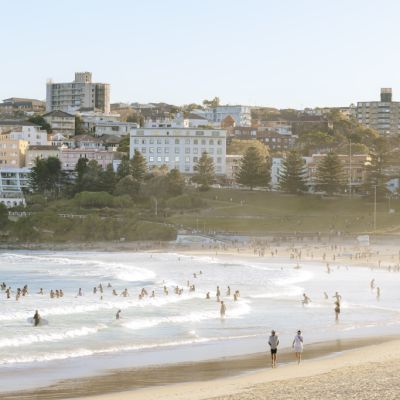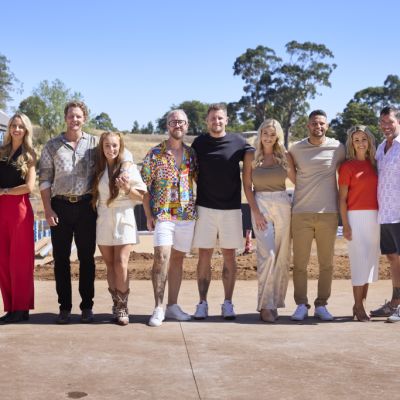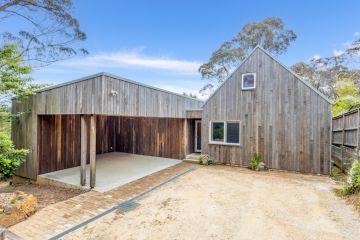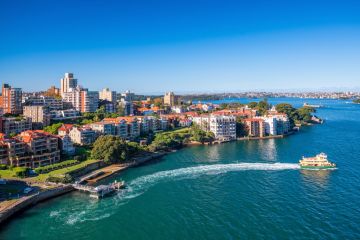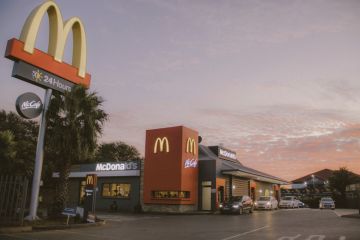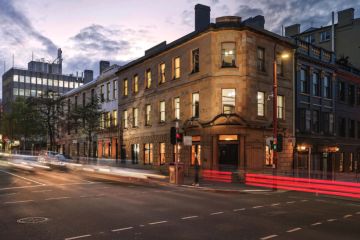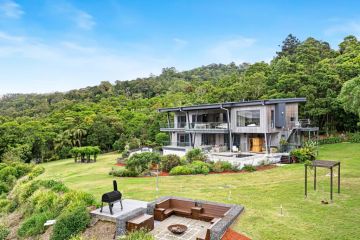The Block contestants will live in caravans, but don't feel sorry for them
For former Block contestant Carlene Duffy, who appeared on the show with husband Michael in 2014, caravans – particularly of the vintage variety – hold a special place in her heart.
The couple have done up five old caravans, including their latest ’70s beauty, Goldie – named after their hometown, the Gold Coast.
She says when it comes to vintage vans, which she wrote about in the DIY book This Old Van, the appeal is twofold.
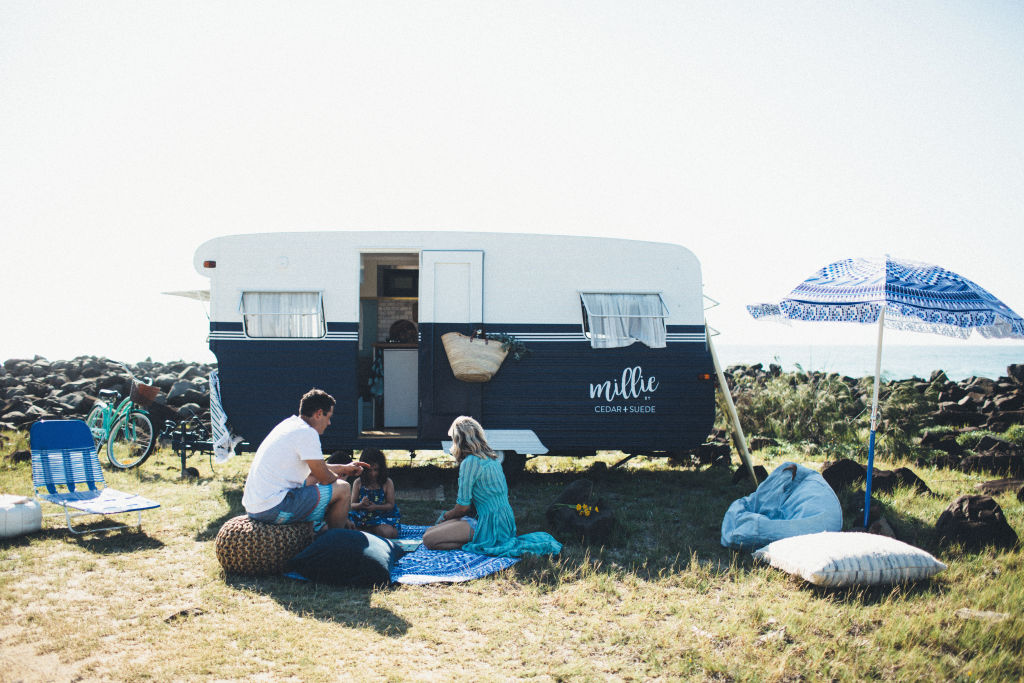
“Probably the affordability factor, but also they’ve got a real sense of character that new vans, I would say, really significantly lack.”
That said, Duffy likely would have welcomed any form of caravan during her 14 weeks on The Block, in which contestants stayed in the homes they were renovating.
The contestants in the 2025 season will stay in self-contained caravans on-site in Daylesford.
During Duffy’s time on the show, she had no working kitchen or private bathroom.
“We were walking down four flights of stairs to go to the construction site bathroom in the middle of the night,” she says.
“And it was freezing; they were awful conditions. So, a caravan would have been amazing.”

Luke Chippindale, of the Caravan Industry Association of Australia, says caravanning has taken quantum leaps since the days in the ’50s, ’60s and ’70s.
“It was a simple, more rudimentary experience back then,” he says, noting that many caravan parks have also undergone a significant glow-up.
Caravans of yesteryear typically didn’t stretch much further than a plywood interior, a simple sink – with a handpump – some bunks, a double bed and a retro-shaped table to play Monopoly or Uno around. And maybe a small electric heater.
Chippindale says the arrival of caravans on this year’s Block is a “prime example of where the market’s really moved to”.
“I mean a van these days will have a good portion of the luxury items from your house, from flat screen TVs to air-conditioners to showers and washing machines.”
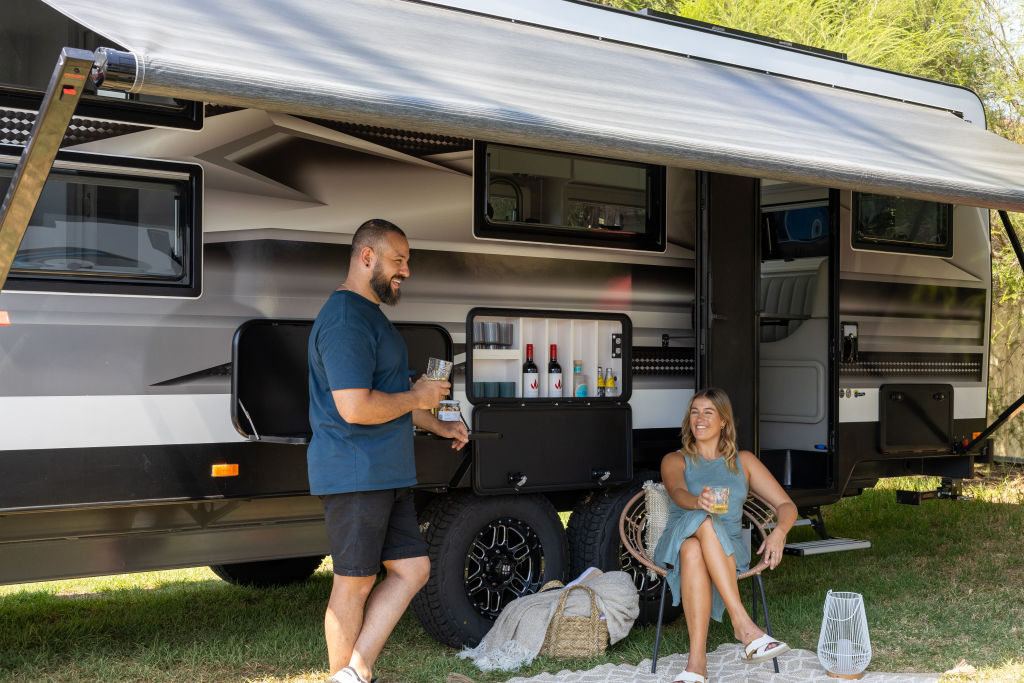
He says the changes have been dictated by consumers, and as caravans have gotten bigger, so have the vehicles in front of them.
“Caravanning isn’t just about being outdoors now, it’s about having your own slice of luxury being towed behind you.”
In terms of a golden age of caravanning, that might be right now.
Tourism Research Australia figures show last year was the second highest year on record (after 2023) for caravan and camping trips in Australia, with holidaymakers spending 57.1 million nights away and a total of $14 billion.
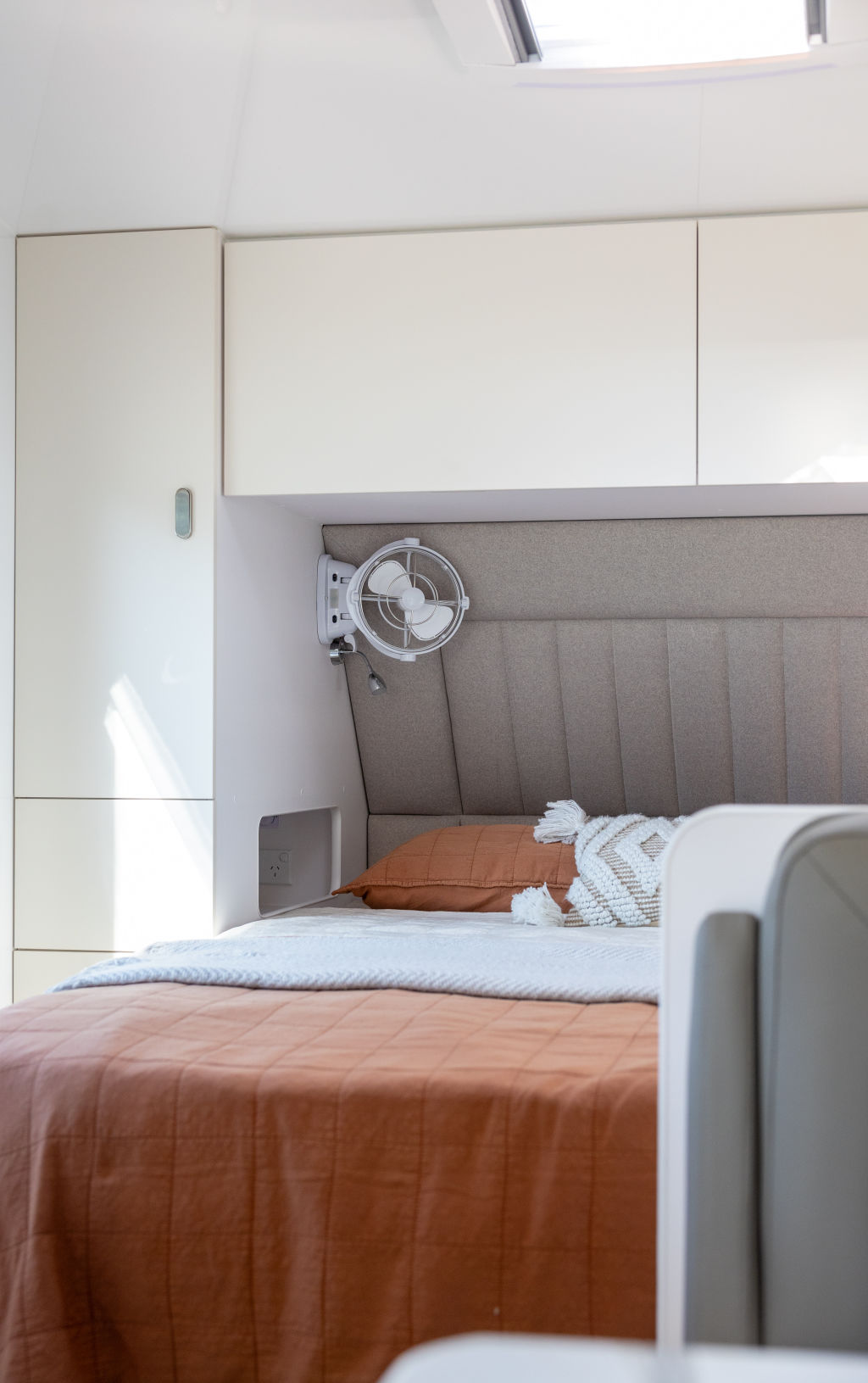
Chippindale says the popularity of caravanning has increased in the 35 to 50-year-old family market, with plenty of digital nomads working their way around the country.
While COVID and its international restrictions led to boom times in caravanning here, Chippindale says once borders reopened, the 50-plus market started jetsetting again – for a while.
“We’re seeing them come back due to global uncertainty,” he says.
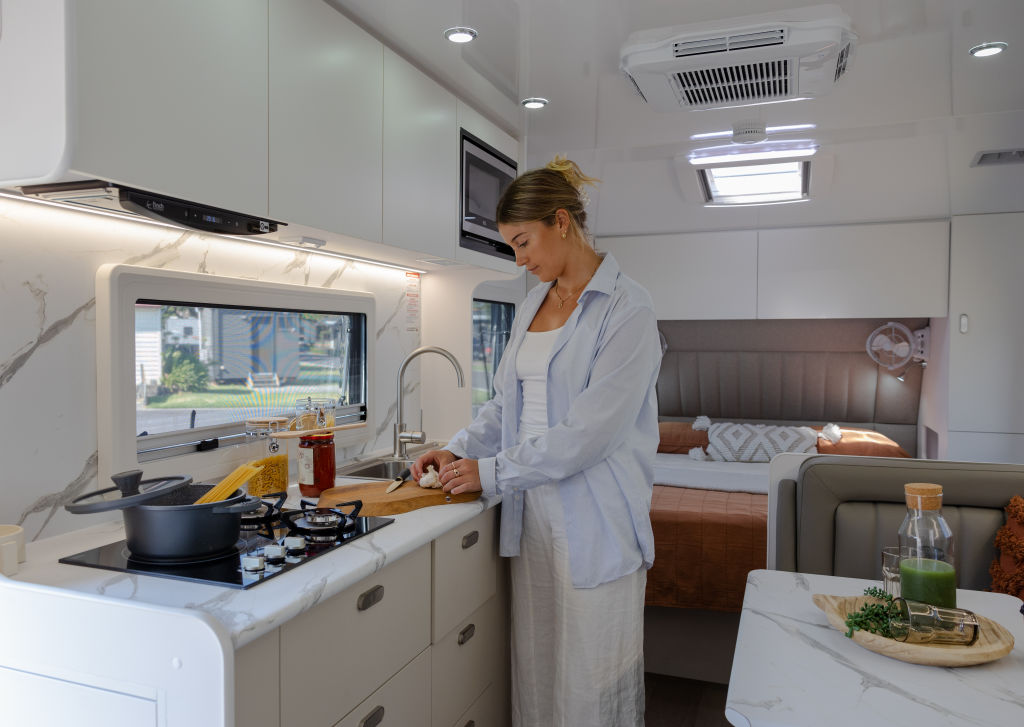
And while plenty of people are happy hitting the road in a converted van – think #vanlife – others are searching for a more high-end experience.
At Melbourne’s Crusader Caravans, some very luxe caravans are rolling off the factory floor as part of the company’s new Designer Series.
The company touts the caravans as having layered lighting and palettes that are a far cry from old, boring and beige, and more like boutique hotels.
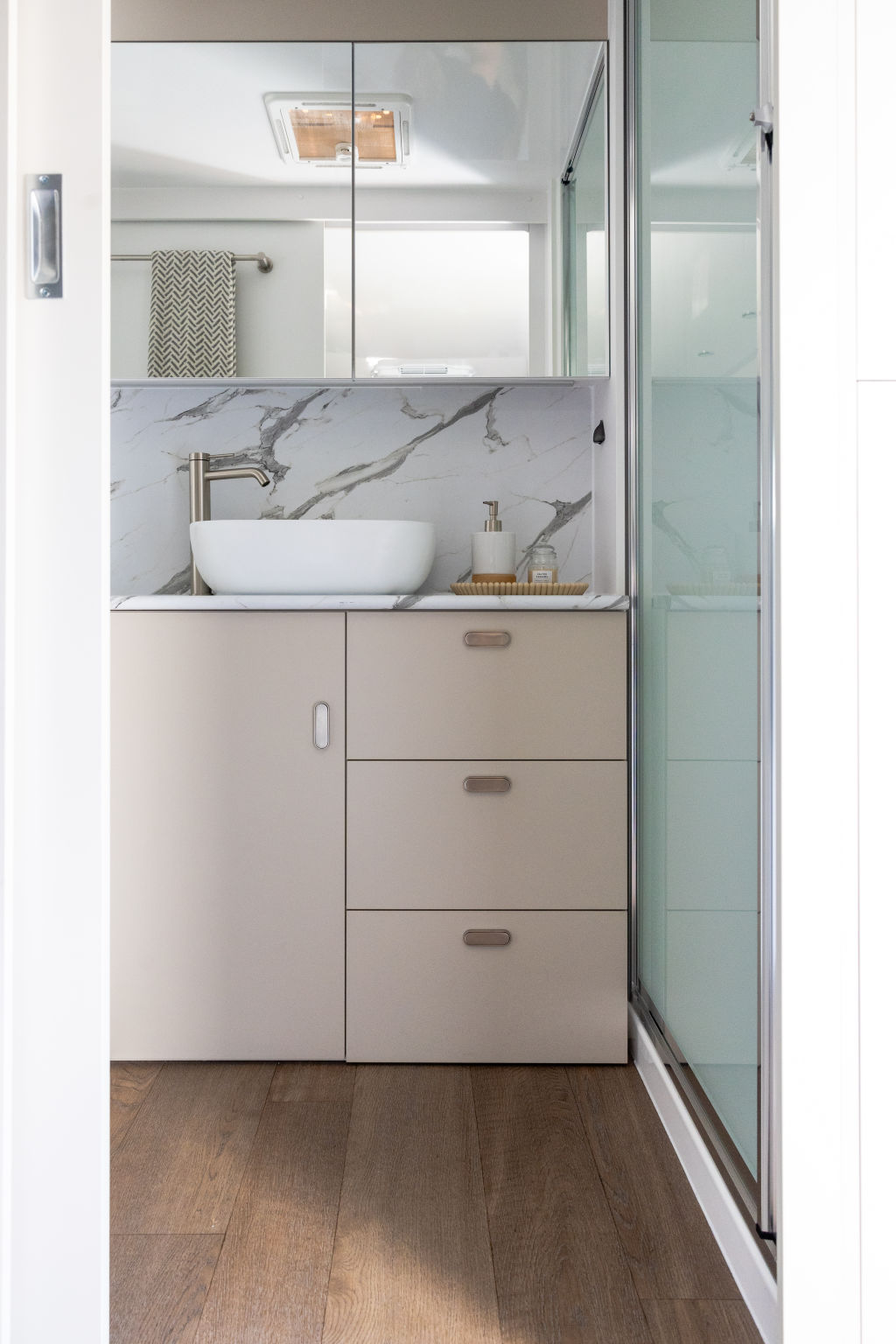
Design consultant Deborah Paidoussi says customers are looking for the creature comforts of home.
“What we’ve found is that caravanners no longer want to compromise on their lifestyle, so, yes comfortable seating and bedding, ample storage, filtered water, refrigeration, clean compost toilets, fully integrated kitchens – and air fryers.”
Paidoussi says caravanners’ priorities change over different stages of their lives, but their vans, which range from about $50,000 to $100,000, appeal to first-timers through to grey nomads.
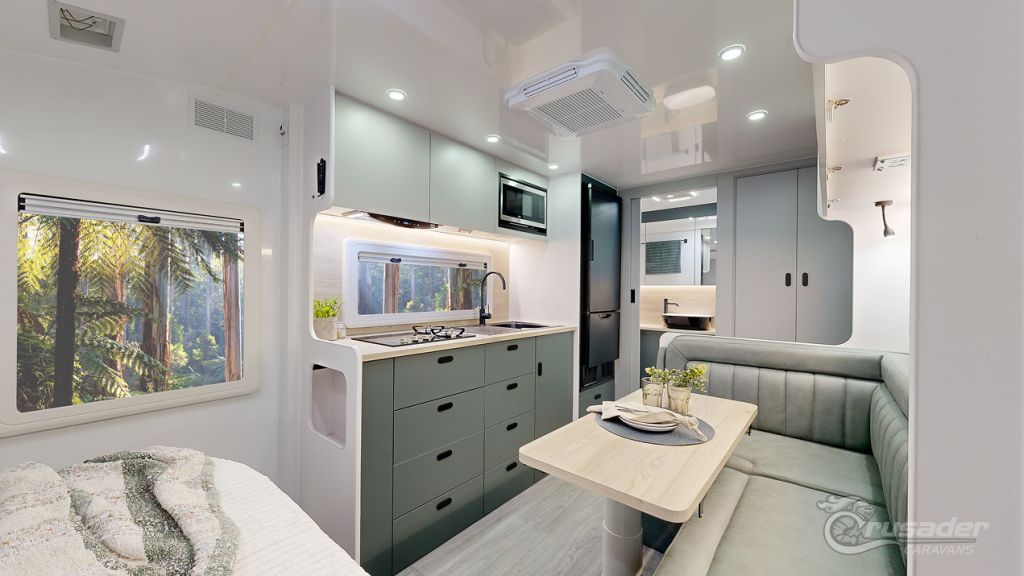
Other Australian companies, such as Queensland’s Bruder, which manufactures customisable off-grid, off-road adventure trailers, go much higher.
Luke Chippindale believes the beauty of caravanning is that there’s something for everyone.
“It allows for you to have the experience you want,” he says. “It also gets us back into our regions, it gets us out of our cities. And it gets us away from our day-to-day lives.”


We recommend
We thought you might like
States
Capital Cities
Capital Cities - Rentals
Popular Areas
Allhomes
More
- © 2025, CoStar Group Inc.

